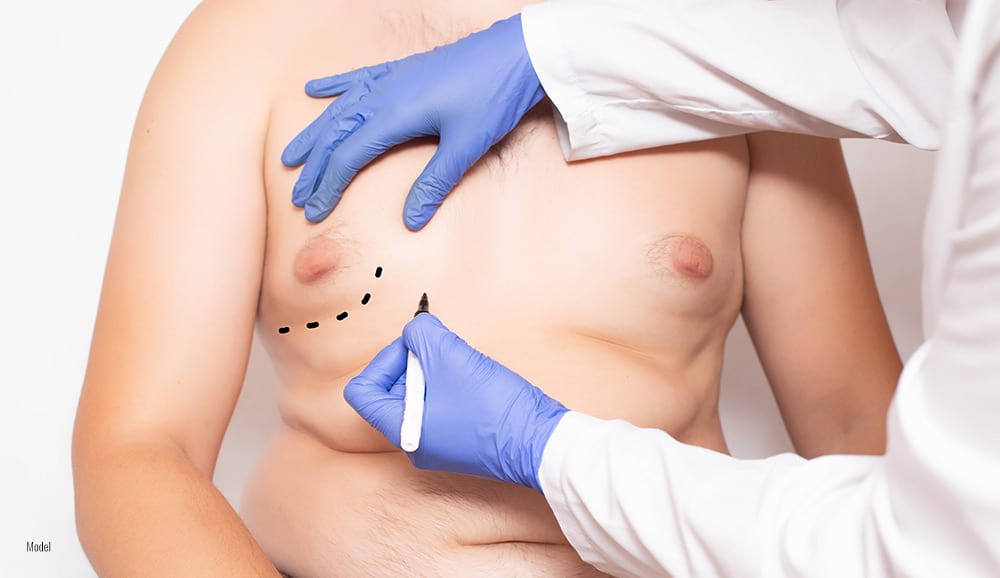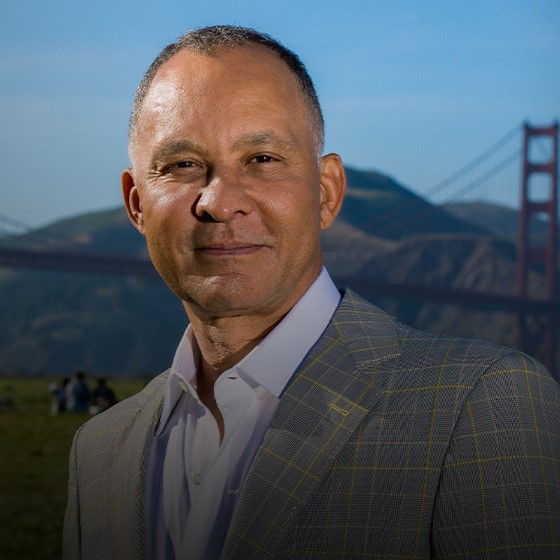
Gynecomastia, the enlargement of male glandular breast tissue, can be caused by a hormonal imbalance, medications, and underlying medical conditions. This blog will review all aspects of this condition, including how it manifests, conservative treatments, and when surgery is the best option to correct it.
6 Min Read:
What is Gynecomastia?
The condition that makes breast tissue in men grow is called gynecomastia, also nicknamed “man-boobs” or “moobs.” While harmless physically, gynecomastia can make a man’s chest look more feminine and can cause psychological distress and social embarrassment during adolescence, young adulthood, and even later in life.
5 Top Causes of Gynecomastia
Gynecomastia is caused by the imbalance of estrogen and testosterone in the male body. Estrogen is present in lower levels than testosterone in men, and when estrogen levels are too high, it can promote breast tissue growth. Here are the most common causes of this hormonal imbalance:
- Hormonal Changes During Puberty: One of the most common causes of gynecomastia is the hormonal fluctuations during puberty or adolescence. During this time, a boy’s body undergoes many changes, and the balance between estrogen and testosterone can be temporarily disrupted. As a result, some boys may experience mild to moderate breast enlargement. In most cases, pubertal gynecomastia is temporary and will resolve on its own as hormone levels stabilize.
- Aging and Hormonal Decline: As men age, their testosterone levels tend to decline. This decline in testosterone, combined with the increase in body fat that can come with aging, may lead to relative increases in estrogen levels. This potential hormonal imbalance in older men can make them more prone to gynecomastia. Aging also makes breast tissue more sensitive to hormonal changes, which can further contribute to the condition.
- Medications: Some medications can also cause gynecomastia as a side effect and include:
- Anti-androgens: Used to treat prostate cancer and other conditions, anti-androgens can lower testosterone levels and cause breast growth.
- Anabolic steroids: Used by athletes and bodybuilders, these muscle-building products can disrupt hormonal balance and cause gynecomastia.
- Antidepressants and antipsychotics: Some psychiatric medications affect hormone levels, which can cause gynecomastia.
- Heart medications: Several medications used to treat high blood pressure or heart failure can cause breast growth in men.
- Substance Use and Abuse: Using certain recreational drugs can cause gynecomastia:
-
- Alcohol
- Marijuana
- Heroin
These substances can affect hormone levels and cause breast growth. Some men may also experience gynecomastia due to chronic liver disease, which is often associated with long-term alcohol abuse that can alter hormone metabolism.
-
- Underlying Medical Conditions: Gynecomastia can also be a symptom of an underlying medical condition. These conditions may include:
- Hypogonadism: This condition causes low testosterone levels in the male body, leading to hormonal imbalance.
- Hyperthyroidism: An overactive thyroid gland may also cause hormonal fluctuations.
- Kidney and liver disease: Both these conditions can affect hormone metabolism and cause testosterone imbalance.
- Tumors: Certain tumors, especially those in the testicles and adrenal or pituitary glands, can produce hormones that cause gynecomastia.
While rare, some foods can cause gynecomastia. Soy products, processed foods, and dairy products can mimic the effects of estrogen and can contribute to fat growth. However, it is still important to eat a well-balanced diet with nutrient-rich foods. Consult with your doctor if you have any dietary concerns.
Gynecomastia Symptoms and Diagnosis
Gynecomastia can affect just one or both sides of the chest and can present with:
Male Breast Growth
The most common symptom of gynecomastia is male breast growth, which can be mild or extensive. In some cases, it only affects one side (unilateral gynecomastia), and in others, both sides become enlarged (bilateral gynecomastia).
Male Breast Tenderness
Men with gynecomastia may experience tenderness or soreness in the chest area. This breast tenderness is usually mild to moderate and, in some cases, severe, which may be accompanied by a feeling of fullness in the chest.
Palpable Tissue
In some cases, men with gynecomastia can feel a firm, rubbery mass of tissue beneath the nipple area. This tissue is movable and usually distinct from the surrounding fat.
Nipple Discharge
Some men with gynecomastia may experience nipple discharge. Any discharge from the nipple, especially if it’s bloody, should be assessed by a healthcare professional as it could be a sign of an underlying condition that needs further evaluation.
Types of Gynecomastia and the Pinch Test
As part of the diagnostic process for gynecomastia, your healthcare provider may employ the pinch test. This simple approach to diagnosis helps determine if enlarged breast tissue in men is due to pseudogynecomastia or true gynecomastia.
The doctor will use their thumb and forefinger to gently pinch the breast tissue. If they feel a firm, rubbery, disk-shaped mass beneath the nipple, the excess breast tissue is most likely due to true gynecomastia. If not, pseudogynecomastia, or excess fat in the chest, is causing the appearance of enlarged breast tissue.
Gynecomastia Treatment
Treatment of gynecomastia depends on the cause, severity, and level of distress. In many cases, gynecomastia may resolve on its own without treatment, especially if it’s related to puberty or a temporary hormonal imbalance. However, if treatment is needed, the following may be considered:
Observation and Reassurance
For mild gynecomastia, especially during puberty, a “wait and see” approach may be recommended and involves regular check ups with a healthcare provider to see if the condition improves over time.
Medication for Gynecomastia
If gynecomastia is caused by persistent hormonal imbalances, medication can be prescribed to treat the condition. Some of the medicines that may be used are:
- Selective estrogen receptor modulators or SERMs: This class of drugs can reduce breast tissue size by blocking the effects of estrogen in the body.
- Aromatase inhibitors: These medications decrease estrogen production and may be highly effective if estrogen levels are high.
Note that medication is most effective when used early in the course of gynecomastia before significant breast tissue has developed, making early intervention crucial for better outcomes.
Surgical Treatment for Gynecomastia
Surgery is often the best option for men with moderate to severe gynecomastia, especially if the condition has been present for a long time or is causing significant distress. Surgical options are:
- Liposuction procedures: Liposuction alone removes excess fat in the chest area and is best for pseudogynecomastia but less effective in removing the excess glandular tissue responsible for true gynecomastia.
- Male breast reduction or mastectomy: A more extensive procedure involving the removal of glandular breast tissue is done through small-to-medium-size incisions, which usually results in minimal scarring. Male breast reduction is sometimes combined with liposuction for more sculpted and masculine-looking results.
Surgery is generally well tolerated by patients, can be a permanent solution, and is recommended for men who don’t respond to other forms of treatment or have severe breast enlargement.
What is the Cost of Gynecomastia Surgery?
Male breast reduction costs vary significantly based on the severity of gynecomastia, the patient’s desired results, the skill of the surgeon, and the location of the practice. A reputable and experienced board-certified plastic surgeon can provide an accurate cost estimate during your consultation.
Gynecomastia Treatment in Novato and San Francisco, CA
Dr. Miguel Delgado is a board-certified plastic surgeon and gynecomastia expert who has been performing gynecomastia surgery in the Bay Area and Northern California for over 40 years. His website offers the most comprehensive gynecomastia resources anywhere if you or a loved one have been affected by gynecomastia and are looking for more information.
Check out Dr. Delgado’s gynecomastia before and after photos.
For more information about gynecomastia treatment in San Francisco, call 415.989.2221. If you are closer to Novato, our gynecomastia expert can be reached at 415.898.4161.

